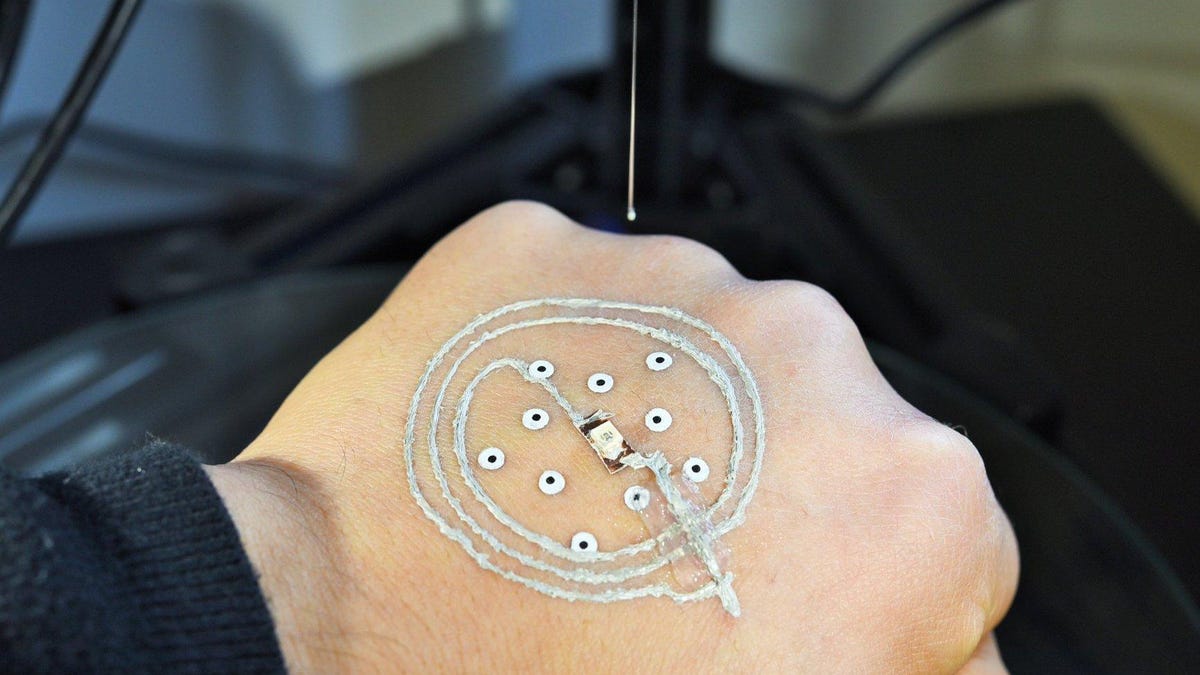Semi-cyborg? 3D printer puts electronics directly on skin
Welcome to a future where a portable 3D printer can place electronics right on the back of your hand, and also print biological cells onto wounds.
You're about to go into a battle zone. You gear up, loading equipment onto your body. Then you hold out your hand to get a 3D-printed sensor that will alert you to chemical or biological agents. It sounds like a scene from a science fiction, but it's not totally outside the realm of reality.
Researchers from the University of Minnesota have placed electronics directly onto a person's hand using a portable 3D printer they designed and developed that costs less than $400 (£290, AU$530).
"We imagine that a soldier could pull this printer out of a backpack and print a chemical sensor or other electronics they need, directly on the skin. It would be like a 'Swiss Army knife' of the future with everything they need all in one portable 3D printing tool," said study lead Michael McAlpine, a mechanical engineering professor.
A demonstration video of the process shows how the customized printer can work with a moving hand, so the subject doesn't have to keep perfectly still. The printer places tracking markers on the hand that act like a map. It takes a 3D scan of the markers and then adds layers of conductive ink made with silver flakes that cure at room temperature.
The video shows the printer installing a wireless LED. The device is able to make adjustments on the fly when the position of the hand shifts. The electronics can be peeled off or washed off when no longer needed.
This 3D-printing technology can handle more than electronics. It can also be used with bioink for medical needs. To test this, the team successfully printed biological cells onto a mouse's skin wound.
"The technique could lead to new medical treatments for wound healing and direct printing of grafts for skin disorders," the University of Minnesota said.
The researchers published a study on the 3D-printing tech this week in the journal Advanced Materials.
Tech Enabled: CNET chronicles tech's role in providing new kinds of accessibility.
Blockchain Decoded: CNET looks at the tech powering bitcoin -- and soon, too, a myriad of services that will change your life.


